Bean flours are a great way to make your cake and eat it too, quite literally. This flour is made from beans, which are gluten-free and high in protein. They also come packed full of vitamins, minerals, and fiber. Whenever you incorporate bean flour into your goods, you get all of these benefits and more.
Whether you want to make a chocolate cake or thicken up a stew, you can do it with bean flour. Although bean flour is not as common as traditional flour, it is just as versatile, all while being healthier and suited for more diets.
So, it’s a great idea to swap out your traditional flour for bean flour. Just about any time you use regular flour, you can simply use bean flour instead. This will allow your food to taste delicious and be healthier in the process. Know in advance that using bean flour requires a little bit of wiggle room since the flour has a stronger flavor than traditional flour.
What Kinds of Bean Flours Are Available?
Bean flour can be made from just about any type of edible bean. The most common types of bean flour include black bean flour, garbanzo or chickpea flour, pinto bean flour, mung bean flour, and navy bean flour.
Although these are by far the most popular types of bean flours, there are tons of other bean flours to consider. In fact, there are over a dozen types of bean flours that can be purchased commercially or made at home. Here is a list of different beans that have been turned into flour:
● Black bean
● Fava
● Garbanzo/chickpea
● Garfava
● Green pea
● Mung bean
● Navy bean
● Soy
● Urad
● White bean
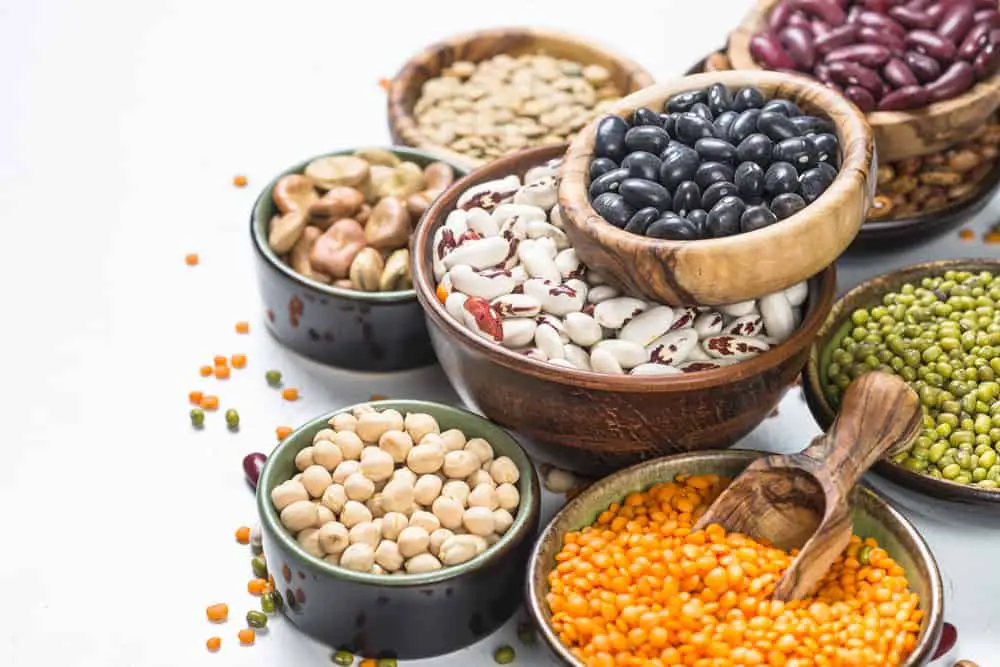
How to Use Bean Flours
The beauty of bean flour is that it is incredibly easy to use in your day-to-day recipes. For the most part, you will use your bean flour just as you would use regular flour. Simply mix it into your recipes to add more texture to your dishes and baked goods.
That being said, you can’t simply replace regular flour with bean flour. Due to the nature of bean flour, recipes do not need the same amount of bean flour as they do regular flour. To make things a bit more difficult, not all recipes call for the same proportion of bean flour to regular flour.
What this means is that you will need to test out bean flour portions for each recipe you make. How much bean flour you should start out with depends on what recipes you are making. As for how you mix it into the recipe, simply mix bean flour into your recipe as you would regular flour.
Baked Goods
Whenever you are using bean flours in baked goods, only use about 25% of the amount of called for flour. So, if a recipe calls for four cups of flour, only use one cup of bean flour. From there, adjust the recipe as needed for each individual item you are making.
Thickener
If you are using bean flour as a thickener, simply eyeball how much to pour in, just as you would with regular flour. Start by pouring in small quantities of bean flour and stop once you get the stew or soup to its desired consistency.
Dip or Filling
Dips and fillings are easy to make with bean flour. You can eyeball the recipe or use about half of the required flour. Once again, fix the recipe as you go and test out your final products.
Are Bean Flours Better Than Regular Flour?

Whether bean flour or regular flour is the best depends on who you ask and what aspect of the flour they’re discussing. In terms of health, bean flours are the best, but some people are in favor of regular flour because it has a less noticeable flavor in the final product.
On the one hand, bean flour is better than regular flour because it is high in protein, fiber, vitamins, and minerals. At the same time, it is completely gluten-free. From this health perspective, bean flour is better than regular flour.
Still, there is a reason why most recipes call for regular flour and not bean flour. The reason for this is that bean flour does maintain the flavor of the beans to a degree. if you use the right portion of bean flour, you should be able to mask the flavors with the other ingredients in your dishes and meals.
Because bean flours can have such a strong flavor if you use too much of it, bean flours require a learning curve. If you use too much, the recipes will taste slightly off due to the overpowering bean flavor. As a result, you must perfect your recipes using bean flour.
Once you master using bean flour in your recipes, bean flours will be the more superior flour simply because it comes with all of the benefits of regular flour plus the health benefits of beans.
Are Bean Flours Healthy?
| Bean Flour | Calories | Fat | Carbs | Fiber | Sugar | Protein |
| Black bean | 120 | 0g | 22g | 5g | 1g | 8g |
| Fava | 110 | 0.5g | 19g | 8g | 1g | 9g |
| Garbanzo | 110 | 2g | 18g | 5g | 3g | 6g |
| Garfava | 110 | 1.5g | 18g | 6g | 3g | 6g |
| Green pea | 50 | 0g | 9g | 4g | 1g | 4g |
| Soy | 120 | 6g | 8g | 3g | 2g | 10g |
| White bean | 110 | 0g | 20g | 8g | 2g | 7g |
Bean flours are incredibly healthy. Whether you are looking for additional vitamins or need a gluten-free alternative, bean flours are a great food type to incorporate into your dishes.
High in Protein
Bean flour is incredibly high in protein. The exact amount of protein will depend on the bean the flour is made from, but nearly all bean flours are high in protein. Soybean flour, for example, has about 10 grams of protein. Black bean flour is another high protein option because it has 8 grams.
High in Vitamins
In addition to the high protein, bean flour comes with tons of vitamins and minerals. Beans are known for their high amounts of magnesium, phosphorus, iron, copper, B1, and manganese. These vitamins are great for everyone, but they are especially great for vegetarians and vegans.
Gluten-Free
Because bean flour is free from gluten, it’s a great option for those who have gluten allergies or sensitivities. The flour will still give your recipes and food texture and body without triggering any allergic reactions.
Are Bean Flours Gluten-Free?
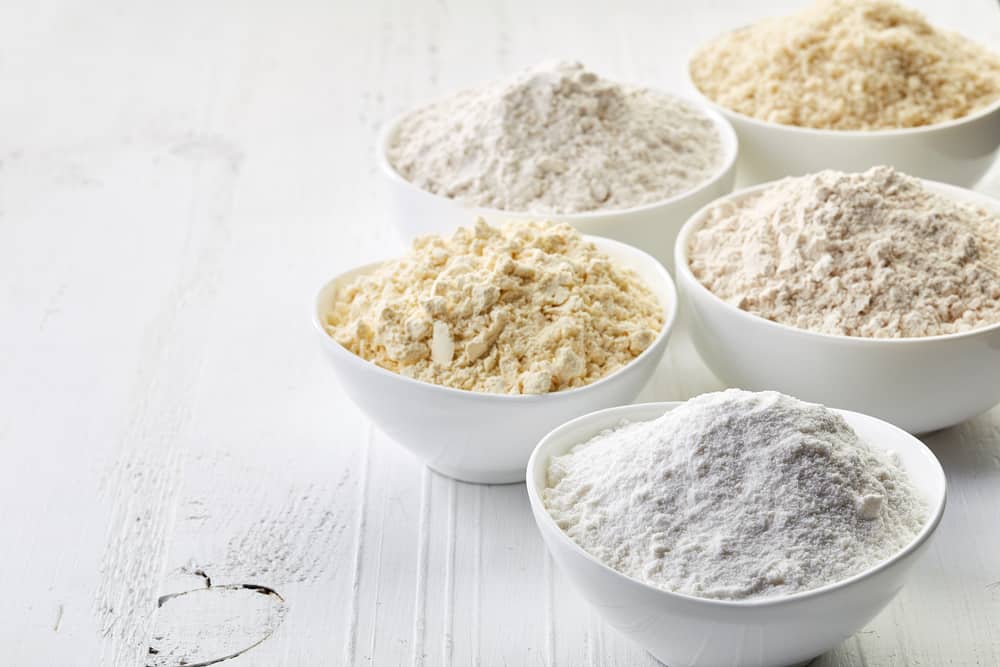
As we’ve learned above, bean flours are completely gluten-free. No matter what kind of bean flour you select, you can trust that it will be completely free of gluten.
Understanding Gluten
In order to understand why all bean flour is gluten-free, you have to understand gluten. Gluten is a type of protein that is found in wheat types. If there is no wheat or exposure to wheat, there is no gluten. Because beans are completely different from wheat, even in their flour form, they are free from gluten.
History of Bean Flour
Bean flour might not be the most popular form of flour today, but it is anything but modern. In fact, bean flour has been used for centuries in cuisines around the globe.
Gram Flour
One of the oldest types of flour is gram flour. Gram flour, often called besan flour or pulse flour, is made from ground chickpea. It has been a staple ingredient in a variety of Indian dishes, including dishes from India, Bangladesh, Nepal, and Sri Lanka. This flour has even been found as far south as Algeria and Morocco.
It makes sense that gram flour has historically been a popular flour type simply because chickpeas were more accessible than we eat in these areas. Plus, chickpea is incredibly easy to grind down into flour at home.
Soy Flour
Whereas gram flour was popular in India and Asia, soy flour has historically been popular as well. The history of soy flour can be found as early as 510CE. In fact, the first time we see the word “Bean Flour” pop up is in 1885 when it was referring to soy flour specifically.
Soy flour has been found all over, ranging from Asia to France to America. In the early 1900s, the US army even experimented with soy flour to see if it made a better army rations substitute.
Bean Flour in America
The last part of the world to really take on bean flour has been America. That’s because the wheat industry dominates so heavily in the country that it’s difficult for other flour sources to creep in.
Nevertheless, bean flour has become more popular over the last two decades as more companies are offering traditional flour alternatives for those with celiac and gluten-free diets. Various companies like Banza and Bob’s Red Mill have made bean flour more commercially popular.
Garbanzo Bean Flour
Garbanzo bean flour is one of the most popular types of bean flour, and it has been that way for centuries. If you want an easy and versatile bean flour to start with, garbanzo bean is a great place to start.
Garbanzo Bean vs Chickpea Flour
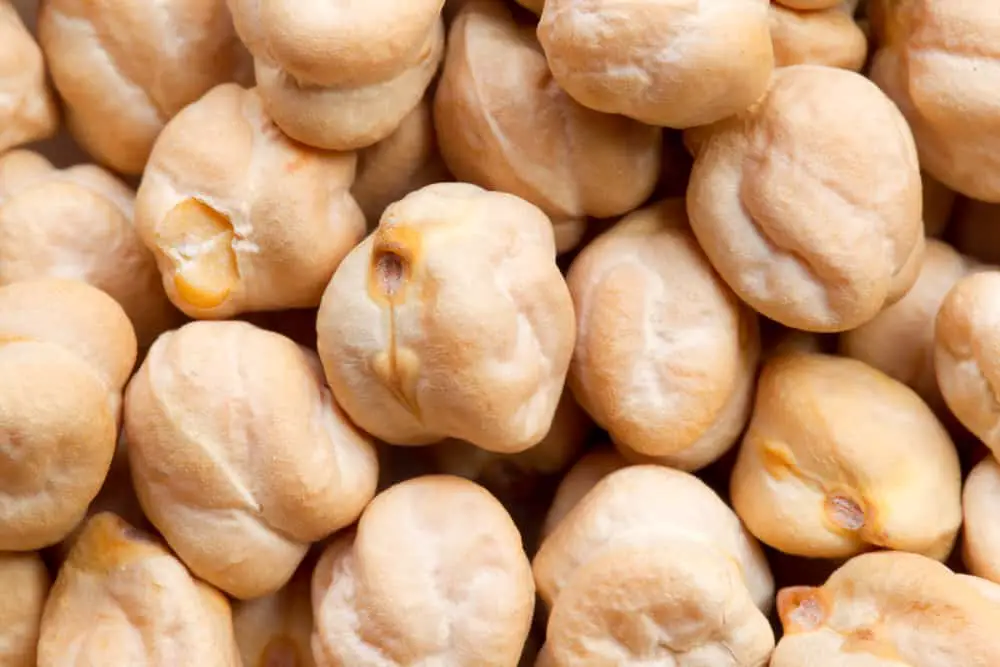
When you are first reading up on garbanzo beans, you will see the terms garbanzo beans and chickpeas used interchangeably. That’s because these two names refer to the same type of bean. As a result, garbanzo bean flour and chickpea flour are exactly the same. There is no difference between the two flours.
How Is Garbanzo Bean Flour Made?
Making garbanzo bean flour is easy, but there are different recipes you can follow. Some people prefer to roast their beans before grinding, whereas others simply like dried chickpeas. The easiest way to make this bean flour is to dry out chickpeas.
Once dried out, the chickpeas are ground up into fine dust. Commercial sellers will use large food processors, but individuals at home can use personal food processors to grind down the dried chickpeas so much that they make a floury texture.
Then, the bean flour is sifted so that the fine flour is separated from the harder bits of chickpeas. Most commercial processors will then process the harder bits again to ensure that all aspects of the chickpea are fine and powdery. If you’re making chickpea flour at home, you will likely need to use a spice grinder or coffee grinder to break down the remaining bits.
What Does Garbanzo Bean Flour Taste Like?
The reason why garbanzo bean flour is so popular is that it has a much more palatable taste than other bean flours. Because garbanzo beans have such a neutral flavor, garbanzo bean flour is not overpowering. However, it does have a slightly nutty flavor, but it can easily be disguised in both savory and sweet dishes.
What Does Garbanzo Bean Flour Smell Like?
Garbanzo bean flour doesn’t have too strong of a smell either. Its smell is slightly earthy or slightly nutty, but its smell is easily masked by the other ingredients in your recipe.
Mung Bean Flour

Mung beans aren’t quite as popular as garbanzo beans in America, but they are a great bean to make flour out of. These beans are very affordable, high in protein, and high in fiber.
That being said, mung bean flour is difficult to use in all American recipes. It has a gelatinous texture that makes it difficult to use in pastries and other baked goods. It is great for noodles, flat bread, and crepes, though.
How Is Mung Bean Flour Made?
It’s a bit more difficult to make mung bean flour than it is to make chickpea flour. Mung bean flour must be made from split mung beans, which are whole green beans that have had the skin removed. Split mung beans will look yellow, not green as a result.
The first step for making mung bean flour is to split the mung bean. This step is incredibly difficult to do at home and is almost always done commercially. If you are making mung bean flour by yourself, simply purchase split mung beans to make the process a bit easier.
With the skin removed from the mung bean, the remaining bean will then be ground down. The grinding process is very similar to that of the chickpea. Food processors are used to break the bean down into small pieces. The beans are then sifted out to separate the hard pieces from the fine pieces. This process continues until the final powdery form is made.
What Does Mung Bean Flour Taste Like?
Mung beans have a neutral flavor as well, but they are slightly sweet and slightly nutty. As a result, the flour has a slightly sweet and nutty flavor, but it is easily masked by the other ingredients in your recipe.
What Does Mung Bean Flour Smell Like?
If you open a thing of mung beans, you will quickly be taken aback by its slightly sulfuric smell. However, that smell is easily washed away after you rinse the beans. Since the smell goes away so easily after rinsing, the flour does not have this sulfuric smell that most people associate with mung beans. Instead, it’s a very neutral, slightly nutty smell.
Is Mung Bean Flour the Same as Green Bean Flour?
Mung bean flour and green bean flour are the exact same. Mung beans are often referred to as green beans in Asia. This is a bit confusing to many Americans who are familiar with the vegetable green bean. Still, mung bean flour and green bean flour are the same because they’re both made from mung beans.
Black Bean Flour
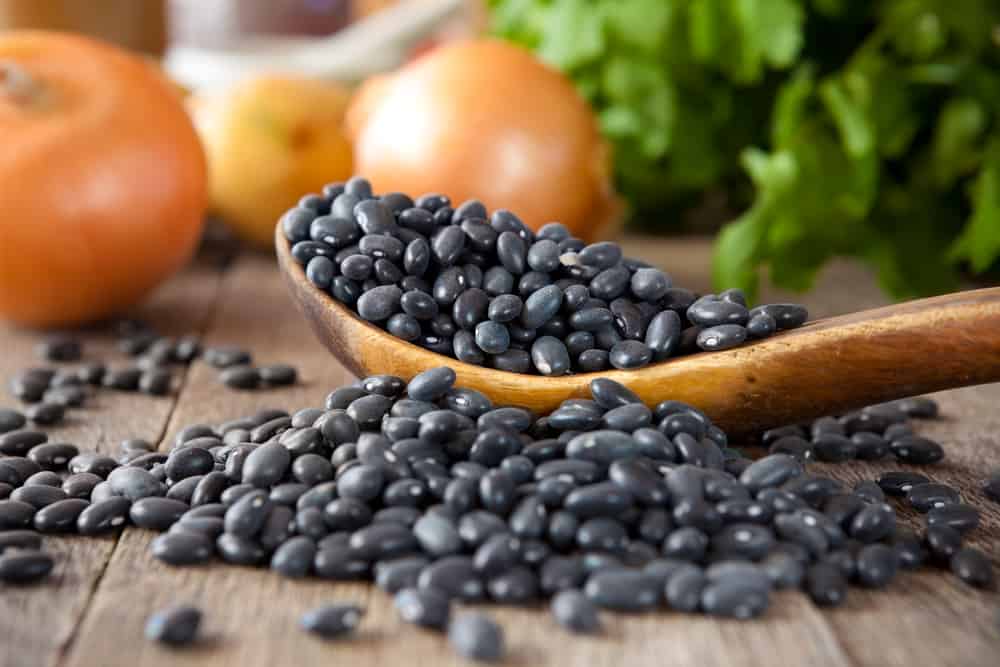
Black beans are a highly popular form of bean, which makes them an obvious choice for bean flour. They are often used as the base for soups, fillings, and dips because of the rich black bean flavor. The flour is even great for binding meats like burgers because it has a strong flavor that tastes great with meat.
How Is Black Bean Flour Made?
Black bean flours are easy to make. The black beans are rinsed and dried out completely. Once dried, they are processed or ground down to make flour. Once again, a processor is often used to get the job done quickly and efficiently. The job is often sifted out and repeated to ensure that the flour is perfectly powdery and fine.
What Does Black Bean Flour Taste Like?
In comparison to the last two bean flours, black bean flour has a much more obvious flavor. That’s because the black bean itself has an incredibly rich and earthy flavor. This flavor is perfectly paired with meats and other savory dishes. Surprisingly, it can also be used in sweet dishes. The rich flavor truly complements the sweets and brings out more subtle notes.
What Does Black Bean Flour Smell Like?
The smell of black bean flour isn’t quite as rich as its taste. It smells slightly earthy, but it isn’t overwhelming.
Are Black Beans Poisonous?
Technically, all beans include a toxic compound called phytohemagglutinin. In small quantities, the compound is not toxic to humans. It is only a danger if you eat large quantities of it, especially when the beans are raw or undercooked.
Because of this compound, it’s important that the beans are prepared correctly. You shouldn’t eat an outrageous portion of black bean flour either, though it is difficult to eat enough black bean flour to have a toxic amount of the compound.
Kidney Bean Flour
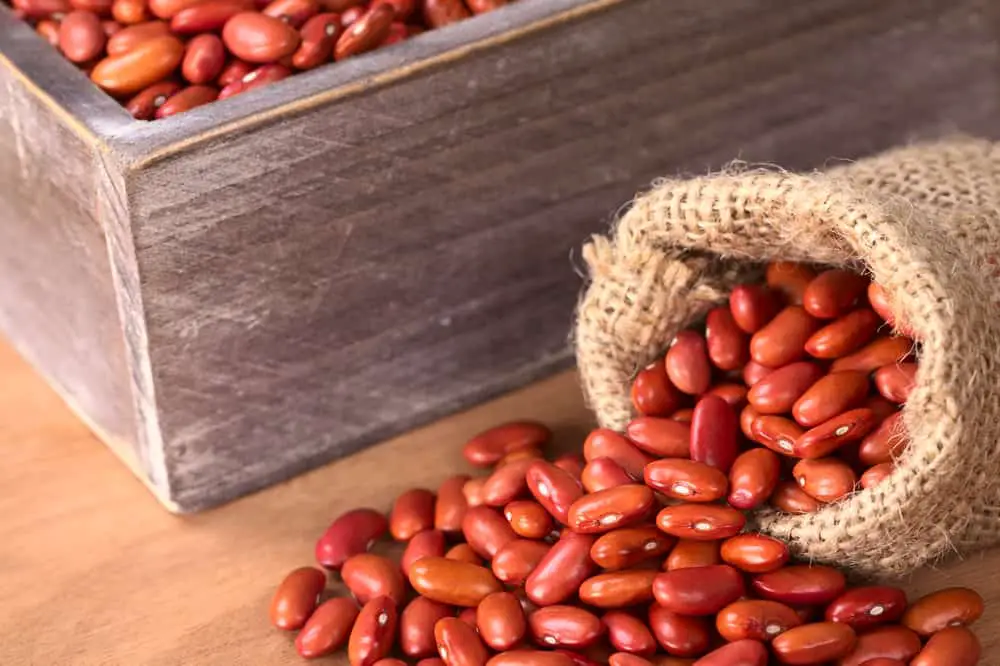
Kidney beans are one of the most readily available bean types at grocery stores in America. This makes kidney beans a great and obvious choice for bean flour. The flour is easy to make and contains numerous health benefits.
How Is Kidney Bean Flour Made?
Kidney bean flour is made just like any other bean flour. The beans are completely dried out and then blended down into fine dust. It takes several rounds of processing in order for the beans to have the dry, powdery consistency of flour.
What Does Kidney Bean Flour Taste Like?
Kidney beans don’t have quite as strong a flavor as black beans, but the flavor is stronger than garbanzo and mung beans. The flavor is slightly earthy, but it isn’t very rich. You don’t have to worry about the flavor of kidney beans taking over your dish.
What Does Kidney Bean Flour Smell Like?
The smell of kidney beans is very earthy. Once you cook the recipe, the smell of the kidney bean flour is largely masked.
Are Kidney Beans Toxic?
Just like black beans, kidney beans contain the toxic compound phytohemagglutinin that can be dangerous if consumed raw or in large quantities. Because of this fact, it’s important that you don’t overeat products that contain bean flour, but it is very difficult to overindulge on kidney bean flour.
Pinto Bean Flour

Finally, the last type of bean flour to consider is pinto bean flour. Pinto bean flour can be used in a variety of different recipes, including soup, sauce, and baked goods. It’s a favorite for making cream-based sauces and soups specifically.
How Is Pinto Bean Flour Made?
By now, you likely understand how bean flour is made. Just like the above-mentioned bean flours, Pinto bean flour is made by rinsing and then drying the beans. The pinto beans are then processed and broken down to a fine powder. After several times in the processor, the final powdery flour is made.
What Does Pinto Bean Flour Taste Like?
Pinto bean flour has a pretty neutral flavor. The flavor is slightly earthy, but it isn’t overwhelming, which makes it easy to mask with other ingredients in your recipes.
What Does Pinto Bean Flour Smell Like?
The flavor of pinto bean flour is slightly earthy as well. You primarily only smell the pinto bean flour whenever you are pouring it into your recipe, but its smell disappears after you have your food.
Bean Flour Substitutions
Many individuals do not like using bean flour because it is difficult to cook with without overpowering your food. Luckily, there are some other flour substitutions to consider that are healthy and gluten-free.
Almond Flour
Almond flour is high in vitamins, fiber, and protein, and it is gluten-free. It has a slightly sweeter flavor than other flour types, making it a great choice for sweet dishes specifically, but it can be used for savory dishes as well.
Oat Flour
Oat flour is a good alternative if you want to make easy flour at home. It is simply made from dry oatmeal. If you are looking for a gluten-free option, make sure that the oatmeal you buy is gluten-free and did not come in contact with any gluten before reaching your home.
Quinoa Flour
Quinoa flour can be used as a bean flour substitute. It’s a great binder and is gluten-free. All the while, it has a lot of calcium, iron, amino acids, and fiber. The main downside of quinoa flour is that it is very expensive.
Final Thoughts
Transform your dishes by using bean flour instead of traditional flour. Not only will you have delicious final results, but the recipes will be healthier and gluten-free. Just make sure to use less bean flour than the recipe calls for and experiment with the quantities to get the best flavor possible.
